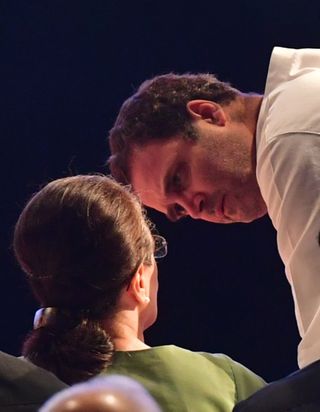The shock that Ahmed Patel’s demise has evoked in the Congress is a testimony to his stature in the party. A recurring theme in the tributes was the sentiment that it will be extremely difficult, if not impossible, to replace Patel, and that the crisis-ridden party needed him most at this juncture.
The significance that Patel succeeded in endowing the post of political secretary to the Congress president with was best expressed in an evocative homage penned by Sonia Gandhi, where she described him as her most trusted colleague, who she could depend on without any questions being asked.
The Gandhis will miss Patel when it comes to reaching out to the dissenting voices. After all, Patel was a friend of many of the 23 writers of the ‘letter of dissent’, and acted as a bridge between them and the party leadership. He had the authority and the political resourcefulness to deal with such situations.
There is a vacuum in terms of whom the leaders should approach to have their grievances heard. At the moment, it is felt that there is no one in the party with the same level of authority.
Said senior leader Digvijaya Singh, “At a personal level, I have lost a friend and a colleague who I trusted, and in whose political analysis and decisions I had deep faith. The Congress has lost its most trusted and committed leader at a time when it needed a person like him the most.”
Patel’s passing marks the end of an era for the Congress since he represented a certain way of functioning, which is expected to see a change with Rahul making a comeback as president. The generational change will be best evident when the party gets into negotiations to form alliances for the assembly elections in early 2021. There will be no Patel, who could leverage the goodwill and respect that he enjoyed beyond party lines, and had great shrewdness to reach out to allies to drive a hard bargain.
Gen-next leaders Jitin Prasada and Dinesh Gundu Rao—who were given the charge of West Bengal and Tamil Nadu, respectively—would be at the helm of alliance discussions. Similarly, it will be up to Rahul’s confidant—Jitendra Singh, who is in charge of Assam—to prepare the party for assembly elections post-Tarun Gogoi, and to deal with the various factions in the state unit.
Said senior leader Saifuddin Soz, “While it is a great loss to us, the Congress has to rise to the occasion…. In two to three months, many outstanding issues are expected to be thrashed out.” They say it is an exercise in futility to talk about substituting Patel since he fit perfectly into the role designed specifically for him, in a structure that Sonia had put in place, reflecting her style of functioning, and that it is not necessary that Rahul should follow the same format.
“Patel was the bridge between the party leadership and the party. Sonia ji had created the structure. This kind of a structure was unique to the leadership of Sonia ji,” said Sanjay Nirupam, senior leader from Maharashtra.
It is being discussed now whether veterans such as Rajasthan Chief Minister Ashok Gehlot or former finance minister P. Chidambaram may have a greater role to play as crisis managers. After all, Gehlot has doused many a fire and is known for his connections beyond the party. Chidambaram is a well-regarded persona, and had a role to play in keeping Sachin Pilot in the Congress when the young leader rebelled.
There is also speculation over who will be Rahul’s Patel—whether it will be K.C. Venugopal, who has emerged as a key link between the party and Rahul, or Randeep Singh Surjewala, who enjoys Rahul’s confidence and had the biggest promotion in the recent reshuffle.
Among the other names being discussed are Rajeev Satav, who is known to be close to Rahul and is amongst his fiercest defendants; Jitendra Singh, a long-time Rahul confidant, and bureaucrat-turned-politician K. Raju, an eminent member of Rahul’s office and a key advisor.
It is not necessary that Rahul will have a political secretary. He can do away with the post, and instead place a team that he reposes his trust in.
Rahul’s inner circle may not have the same kind of political tact or authority that Patel had to deal with leaders within and outside the party. Critics of the present style of functioning also say that now is the time for the party leadership to get truly hands-on instead of depending on a go-between.
However, there is also a view that a leader needs a person or persons to act as a link between him and the party. “As a leader of the party, you have to deal with multiple issues. You need someone who is like a go-between or a shock absorber. And, to serve this purpose, you need someone trustworthy,” said a leader close to Rahul.
The Patel era is over, and with the Sonia era, too, coming to an end soon, it remains to be seen if Rahul rises to the occasion and gets the party to rally around him.



